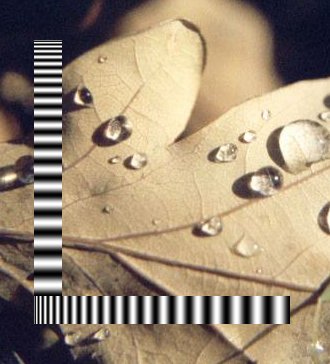| HARFA: SCREENSHOTS AND TUTORIALS: DERIVATION FILTERS |
| |
Filtration
Derivation Filters
The derivation of the discrete data sequence (grey level of pixel) cannot be established because of its discontinuity. The simplest method of the derivation simulation consists in evaluating of rates of differences. We can state the backward derivation (eq. 1), the forward derivation (eq. 2) and the middle derivation (eq. 3).
 (1) (1)
 (2) (2)
 (3) (3)
This way of derivation corresponds with these filtration matrices:
 (4) (4)
 (5) (5)
 (6) (6)
In image science, just the middle derivation is used, because of its symmetry. Derivation causes emphasis of high-frequency noise. It can completely suppress the original image. Therefore, some smoothing (suppressing of higher frequency terms) before the derivation is needed. HarFA can provide a row-derivation filter (eq. 4) a column-derivation filter (eq. 5) and a combined row-column derivation filter (eq. 5). The disadvantage of thise filters is, that they are direction-dependent. It means, they preferably highlights edges which lie plumb on the derivation direction. Filters, which enhance edges abstractedly from their orientation are called isotropic filters (gradient filter, Laplace filter).

The original image, the row-derivation filter, the column-derivation filter, the combined row-column derivation filter (place your mouse on the numbers)
Previous
Next
|
|
|